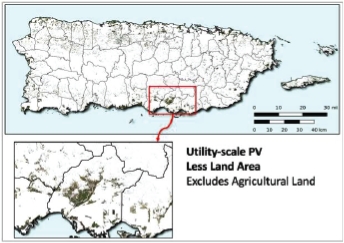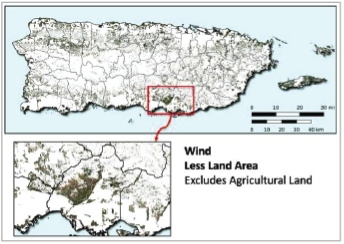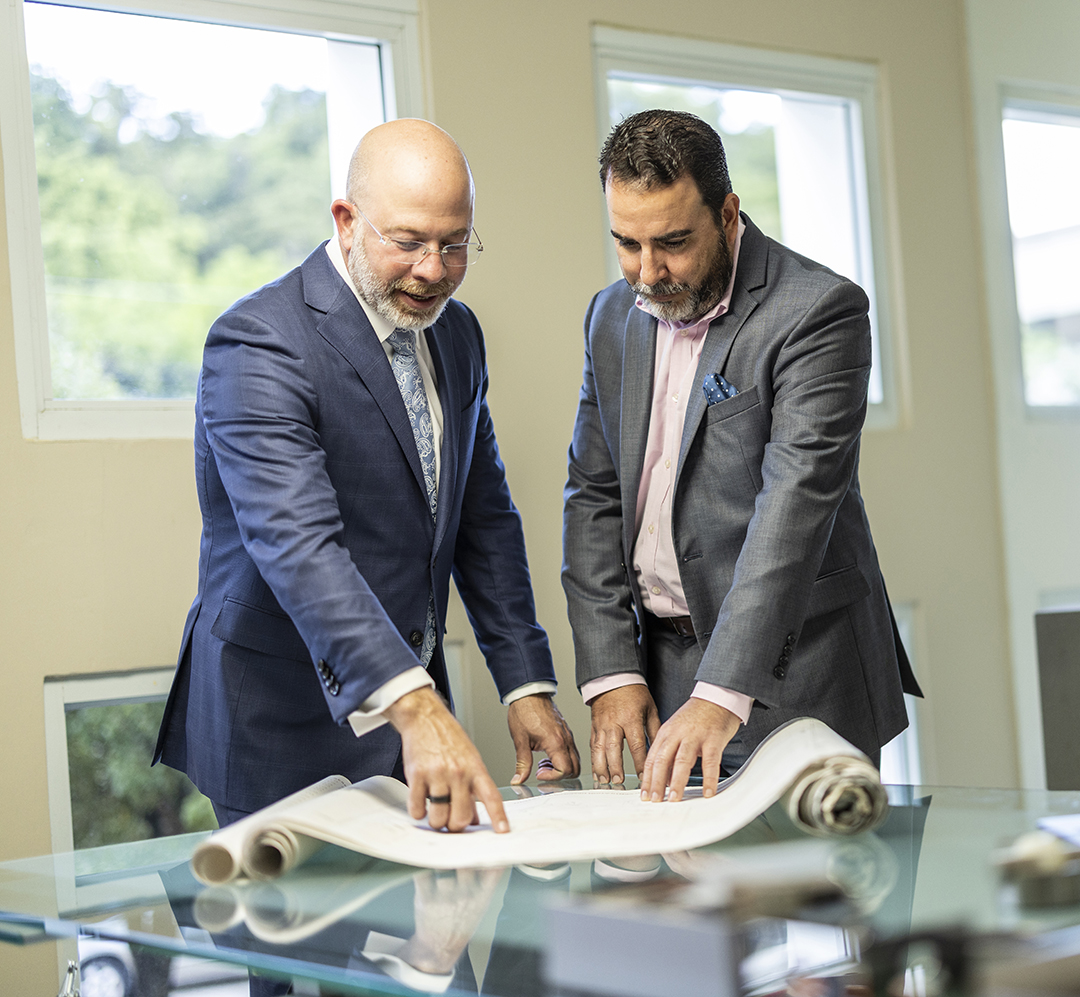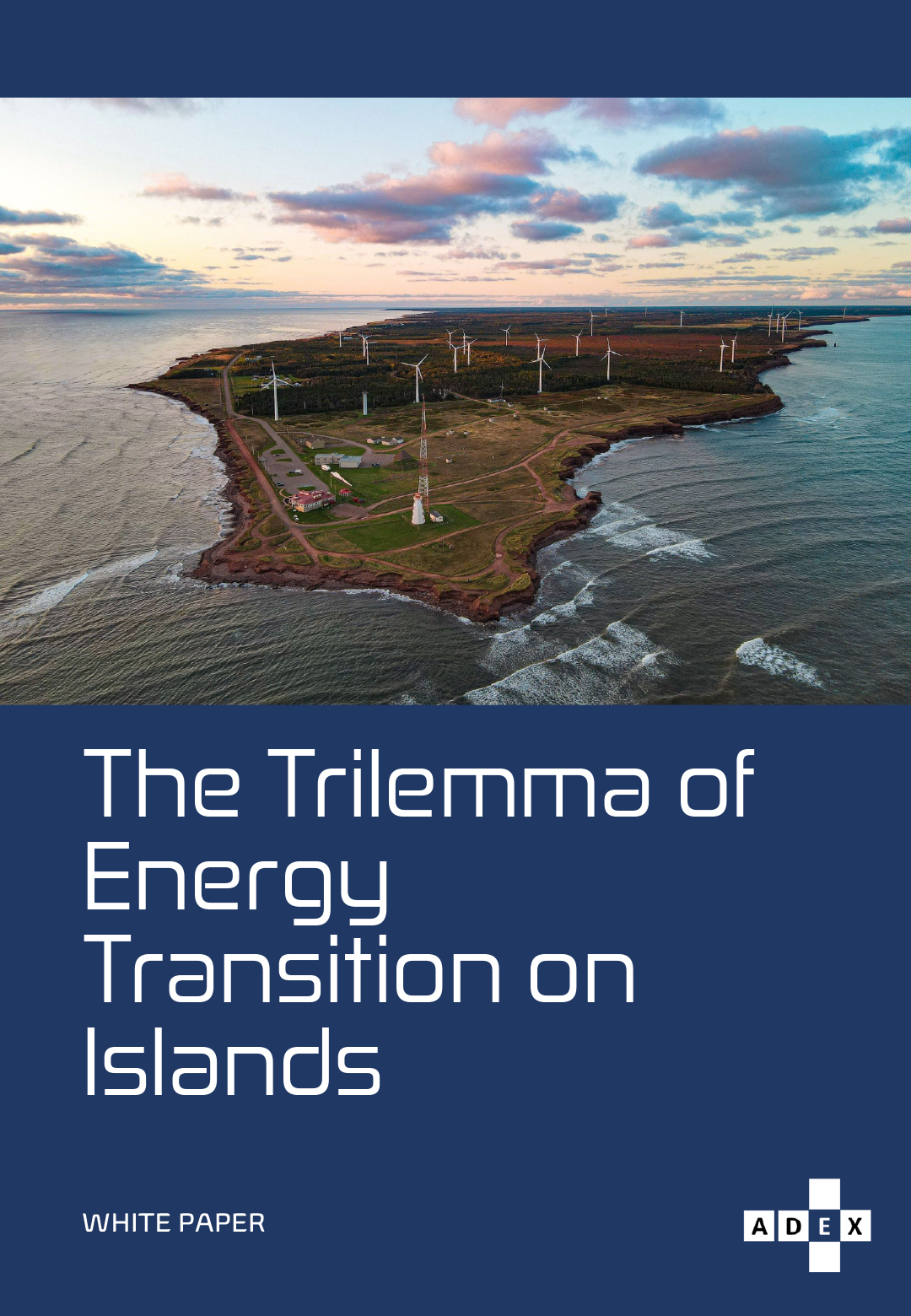Project Hostos

The Energy Crisis Continues:
There is no energy future for Puerto Rico without interconnection
- Puerto Rico has an untenable energy crisis that fuels migration, discourages investment, and cripples the economy.
- Recent hurricanes have caused many deaths attributed to the failure of the electrical system.
- Although over $9 billion has been allocated to rebuild the system, this only addresses transmission and distribution grids, not resiliency. When another hurricane occurs, Puerto Rico may lose power again.
- PR’s generation assets are on average 50 to 70 years old. The two most recent, most efficient, and least expensive power plants in the country were installed in the 1990s and are slated to be decommissioned in the next 5 years, leaving an already existing shortage in worse condition.
- Immediate action is needed to mobilize the multiple projects required to build a resilient energy system for the island that can power an economic recovery.
White Paper:The Trilemma of Energy Transition on Islands
By: Jose A Martinez, CEO of ADEX and Innovation Expert of the EU for the Energy Sector.
This independent article reports on the challenges island nations are facing in accessing cheap, renewable energy.
Learn more about the World Energy Trilemma Index visiting here.
Interconnection is the Solution:
Fundamental to a resilient future and key to the transition to renewable energy sources.
Unlike the Caribbean, many European countries’ energy grids are interconnected across themselves and Africa via submarine cables. Amount of cables that transport energy into the USA from Canada or Mexico, two of them are subsea cables. Interconnection allows for better system stability, accelerates transition to modern technologies, reduces energy waste, and opens trade opportunities. Puerto Rico and the Dominican Republic are ideal for interconnection.
Interconnection will insert Puerto Rico in a worldwide trend that will provide the island access to a new energy supply market and to diverse generation options, including renewable energy.
The fastest route to PR100
The Government of Puerto Rico, the DOE and FEMA have validated their commitment to 100% renewable energy by 2030. The most recent progress report issued by PR100 has confirmed the feasibility of the goal and identified two significant challenges:
1. For a stable 100% renewable system, Puerto Rico can't rely only on individual rooftops. It needs utility-size renewable generation. The report showcases the challenge of Puerto Rico's limited availability of land for big wind or solar farms. By interconnecting with the Dominican Republic, Project Hostos opens access to potential new energy generation resources.

Land available for utility-scale solar PV development with agricultural lands excluded, with detailed insets. Graphics by NREL. 
Land available for utility-scale, land-based wind development with agricultural lands excluded, with detailed insets. Graphics by NREL. 2. Today, the local electrical grid is too fragile and needs to add generation capacity in the near term. The report warns against investing in new non-renewable generation assets that will become obsolete in 2030. Project Hostos can add 500 Megawatts to the Puerto Rico system very quickly without PR having to continue to expand its investments in non-renewable energy sources.
Connecting Energy Grids
Execution plan for interconnection.
Caribbean Transmission Development Company is developing an underwater high-voltage DC cable between Puerto Rico and the Dominican Republic that will interconnect each island's electrical grid. Before installing the submarine cable on the bottom of the sea bed, the subsea terrain is studied and evaluated to determine the best cable route.
Click on the points below and learn more about the process:
Traditional transmission grids operate with High-Voltage Alternating Current (HVAC). However, High-Voltage Direct Current (HVDC) has become the method of choice for subsea electrical transmission and long-distance power transmission, as electricity can be carried across greater distances with minimal losses. HVDC is more environmentally friendly than HVAC, providing more energy per square meter over greater distances, as well as lower losses and less space requirements.
Cable installation is performed with specialty vessels and equipment. These vessels are known as Cable Layers and are specially equipped to hold up to 2x 100 ton reels of subsea cable.
Modern cable layer ships come equipped with Dynamic Positioning technology (DP). DP is a computer-controlled system to automatically maintain a vessel's position and heading by using its own propellers and thrusters. Position reference sensors, combined with wind sensors, motion sensors and gyrocompasses, provide information to the computer pertaining to the vessel's position and the magnitude and direction of environmental forces affecting its position. This ensures that the cable is placed in the exact routing that was selected during engineering.
On land and coastal areas up to a depth of 30 meters, the HVDC cable is buried at a depth of 2 meters or deeper. In order to reduce the ecological footprint of the install and avoid harming any biological (plants, coral reefs, etc.) or human made features (buildings, parks, etc.), burial is performed using Horizontal Drilling via specialized auger equipment.
In order to connect the two HVAC island grids through the HVDC submarine cable, Converter Stations are placed at each end of the cable. These conversion stations, besides transforming from AC to DC, also add several benefits:
- Optimized grid resilience thanks to the capacity to stabilize AC networks
- The prevent system distortions to be transferred from one grid to the other
- State-of-the-art control and protection systems
- Minimized maintenance and service requirements and the highest health and safety standards
Preliminary studies indicate that Project Hostos may have a cable depth exceeding 300 meters. Given the extreme pressures at this depth, specially designed conductors must be used. These cables are manufactured for the specific capacity, voltage, and depth of each project.
At these depths the cable is laid on top of the ocean floor with the assistance of an Unmaned Underwater Robotic Vehicle (UURV) that performs bathymetry analysis to a precision of .25 x .25 meters and ensures a safe and correct installation.







Traditional transmission grids operate with High-Voltage Alternating Current (HVAC). However, High-Voltage Direct Current (HVDC) has become the method of choice for subsea electrical transmission and long-distance power transmission, as electricity can be carried across greater distances with minimal losses. HVDC is more environmentally friendly than HVAC, providing more energy per square meter over greater distances, as well as lower losses and less space requirements.
In order to connect the two HVAC island grids through the HVDC submarine cable, Converter Stations are placed at each end of the cable. These conversion stations, besides transforming from AC to DC, also add several benefits:
- Optimized grid resilience thanks to the capacity to stabilize AC networks
- The prevent system distortions to be transferred from one grid to the other
- State-of-the-art control and protection systems
- Minimized maintenance and service requirements and the highest health and safety standards
Cable installation is performed with specialty vessels and equipment. These vessels are known as Cable Layers and are specially equipped to hold up to 2x 100 ton reels of subsea cable.
Modern cable layer ships come equipped with Dynamic Positioning technology (DP). DP is a computer-controlled system to automatically maintain a vessel's position and heading by using its own propellers and thrusters. Position reference sensors, combined with wind sensors, motion sensors and gyrocompasses, provide information to the computer pertaining to the vessel's position and the magnitude and direction of environmental forces affecting its position. This ensures that the cable is placed in the exact routing that was selected during engineering.
On land and coastal areas up to a depth of 30 meters, the HVDC cable is buried at a depth of 2 meters or deeper. In order to reduce the ecological footprint of the install and avoid harming any biological (plants, coral reefs, etc.) or human made features (buildings, parks, etc.), burial is performed using Horizontal Drilling via specialized auger equipment.
Preliminary studies indicate that Project Hostos may have a cable depth exceeding 300 meters. Given the extreme pressures at this depth, specially designed conductors must be used. These cables are manufactured for the specific capacity, voltage, and depth of each project.
At these depths the cable is laid on top of the ocean floor with the assistance of an Unmaned Underwater Robotic Vehicle (UURV) that performs bathymetry analysis to a precision of .25 x .25 meters and ensures a safe and correct installation.

Traditional transmission grids operate with High-Voltage Alternating Current (HVAC).

Cable installation is performed with specialty vessels and equipment.

On land and coastal areas up to a depth of 30 meters, the HVDC cable is buried at a depth of 2 meters or deeper.

Preliminary studies indicate that Project Hostos may have a cable depth exceeding 600 meters
Traditional transmission grids operate with High-Voltage Alternating Current (HVAC). However, High-Voltage Direct Current (HVDC) has become the method of choice for subsea electrical transmission and long-distance power transmission, as electricity can be carried across greater distances with minimal losses. HVDC is more environmentally friendly than HVAC, providing more energy per square meter over greater distances, as well as lower losses and less space requirements.
In order to connect the two HVAC island grids through the HVDC submarine cable, Converter Stations are placed at each end of the cable. These conversion stations, besides transforming from AC to DC, also add several benefits:
- Optimized grid resilience thanks to the capacity to stabilize AC networks
- The prevent system distortions to be transferred from one grid to the other
- State-of-the-art control and protection systems
- Minimized maintenance and service requirements and the highest health and safety standards
Cable installation is performed with specialty vessels and equipment. These vessels are known as Cable Layers and are specially equipped to hold up to 2x 100 ton reels of subsea cable.
Modern cable layer ships come equipped with Dynamic Positioning technology (DP). DP is a computer-controlled system to automatically maintain a vessel's position and heading by using its own propellers and thrusters. Position reference sensors, combined with wind sensors, motion sensors and gyrocompasses, provide information to the computer pertaining to the vessel's position and the magnitude and direction of environmental forces affecting its position. This ensures that the cable is placed in the exact routing that was selected during engineering.
On land and coastal areas up to a depth of 30 meters, the HVDC cable is buried at a depth of 2 meters or deeper. In order to reduce the ecological footprint of the install and avoid harming any biological (plants, coral reefs, etc.) or human made features (buildings, parks, etc.), burial is performed using Horizontal Drilling via specialized auger equipment.
Preliminary studies indicate that Project Hostos may have a cable depth exceeding 600 meters. Given the extreme pressures at this depth, specially designed conductors must be used. These cables are manufactured for the specific capacity, voltage, and depth of each project.
At these depths the cable is laid on top of the ocean floor with the assistance of an Unmaned Underwater Robotic Vehicle (UURV) that performs bathymetry analysis to a precision of .25 x .25 meters and ensures a safe and correct installation.
Important details:
- • The cable will operate at 320KV Direct Current with a capacity to transport electricity of up to 500MW in either direction without interrupting operations of either grid. This represents about 12% of the energy capacity in Puerto Rico.
- • Given a complete loss of grid power, the cable will permit a black start of the Puerto Rico grid.
Choosing the Right Path
Criteria for selecting the cable route.
Project Hostos takes care to minimize any environmental impact that could be caused by submarine cable installation, it is important for us to choose the best route.
The process involves:
- Minimizing the length of the path
- Minimizing interference with fish management areas
- Minimizing interference with protected areas/IBAs and benthic habitat
- Avoiding deep canyons and landslide walls
- Minimizing interference with farming
- Minimizing interference with urban centers and tourist areas
- Avoiding direct interference with restricted areas (military, airports, etc.)
- Optimizing the use of existing infrastructure
- Maximizing parallelism with existing infrastructures (roads, railways, power lines)

Project Roadmap
Overview of tasks completed and our next steps.

Starting strong
- Caribbean Transmission Development Company has secured the most advanced, sustainable, and innovative technology to become part of Puerto Rico’s energy crisis solution and finance it with private investment.
- A study assessing the commercial, technical, and environmental feasibility of Project Hostos has been conducted and validated.
- We established a relationship with the Department of Energy and have been assigned a DOE director as a liaison to assist us as we navigate the different federal agencies that intervene in the approval of our project.
- Interfaced with the US Senate and House of Representative's Natural Resources and Energy Committees, as well as with local Puerto Rico and Dominican Republic stakeholders and authorities. We have received positive reactions from all the persons engaged.

Jacobs joins the team
We have partnered with Jacobs (www.jacobs.com) to conduct the environmental review process, develop GIS data sets and routing recommendations, conduct preliminary engineering design, and develop initial permit applications.
Jacobs is an international solutions firm serving the energy, environment, infrastructure, advanced manufacturing, cities & places, health & life sciences, national security, and space markets.

Requesting a U.S. Presidential Permit
Caribbean Transmission has submitted a Presidential Permit Application for Project Hostos to the U.S. Department of Energy (DOE) Grid Deployment Office. The Notice of Application is available on the Federal Register here for public review. Comments may be submitted to the DOE as indicated in the Notice of Application by April 15, 2024 for comments.
Eugenio María de Hostos:
The enduring dream that names our project.

Eugenio María de Hostos, born in Mayagüez, Puerto Rico in 1839, was a visionary leader strongly committed to eradicate social, racial and gender inequalities. Hostos advocated his ideas in Puerto Rico, the Dominican Republic and throughout the Americas, which granted him the posthumous title of "Citizen of the Americas".
For years he embraced the idea of an Antillean Confederation to strengthen their independence, freedom and sovereignty. He emphasized that Puerto Rico and the Dominican Republic shared the same geographical structure, mountain system, climate, as well as the same agricultural, commercial and industrial zones. He believed that given these similarities and proximity, Puerto Rico and the Dominican Republic (alongside other islands in the Antilles) should create an alliance crucial to sustain their respective Caribbean nations’ economy and social status. Hostos died in 1903 and, due to his contributions to the Latin American people, is the only foreigner buried in the Dominican Republic's National Pantheon, where all Dominican patriots are buried.
We are proud to name our project after him, in hopes to continue his legacy and to bless our endeavors with his nation-uniting strength.
Frequently asked questions
- What is HVDC technology and what is it used for?
HVDC (High-Voltage Direct Current) technology is a method of transmitting electrical power using direct current (DC) rather than alternating current (AC), which is the more conventional method of power transmission. HVDC is used for transmitting electrical power over long distances with minimum power loss, connecting isolated power systems, and connecting renewable energy sources to the grid. HVDC is also used for underwater power transmission and for interconnecting grids with different frequencies.
- What are the benefits of HVDC technology?
High-Voltage Direct Current (HVDC) technology offers several benefits including:
- Energy Efficiency: HVDC transmission lines have lower transmission losses compared to alternating current (AC) transmission lines.
- Long-Distance Transmission: HVDC is more suitable for long-distance power transmission compared to AC as it does not suffer from the same level of energy loss.
- Interconnections: HVDC can be used to interconnect different AC power grids, enabling power to be transferred between different regions or countries.
- Grid Stability: HVDC can help improve grid stability by providing fast-acting control over the flow of power.
- Underwater transmission: HVDC is well-suited for underwater transmission, which is useful in locations where a large body of water needs to be crossed.
- Renewable Energy Integration: HVDC can be used to transmit large amounts of renewable energy over long distances, making it possible to bring clean energy to remote areas.
HVDC technology provides a flexible and efficient means of transmitting power over long distances, improving grid stability and facilitating the integration of renewable energy sources into the power grid.
- What maintenance is needed for submarine cables?
Submarine cables require regular but minimal maintenance to ensure their continued operation and to minimize the risk of failure. The maintenance required for submarine cables typically includes:
- Monitoring: Regular monitoring of the cable is necessary to detect and diagnose any issues before they become serious. This may include monitoring the cable's temperature, resistance, and capacitance.
- Inspection: Submarine cables can be inspected using remote-operated vehicles (ROVs) or autonomous underwater vehicles (AUVs) to check for damage or other issues.
- Repair: If a fault is detected, it may be necessary to repair the cable. This may involve splicing the cable to bypass the damaged section or replacing the damaged cable segment.
- Preventive Maintenance: Preventive maintenance measures can help reduce the risk of cable failure. This may include regular cleaning of the cable to remove growths or deposits, checking for signs of corrosion or abrasion, and replacing cable components that are showing signs of wear.
- Upgrades: As technology advances, submarine cables may need to be upgraded to maintain their performance and reliability.
The maintenance required for submarine cables will vary depending on the specific cable and its operating environment, but regular monitoring, inspection, and preventive maintenance are critical to ensuring their continued operation.
- How is a submarine cable installed?
The installation of a submarine cable involves several steps, including:
- Route Survey: The first step in installing a submarine cable is to survey the proposed route to determine the best path for the cable and to assess any potential obstacles or challenges that may need to be addressed.
- Cable Manufacturing: The cable itself is then manufactured, considering the specific requirements of the route, including the type and amount of cable armor needed to protect against potential damage from fishing gear or other sources.
- Laying the Cable: The cable is then laid on the seabed along the route determined by the survey. This may be done using a cable-laying ship equipped with specialized equipment for handling and laying the cable.
- Burial: To protect the cable from damage from fishing gear or other sources, it may be buried beneath the seabed using plows or jetting equipment.
- Connection: The ends of the cable are then connected to the shore-based equipment and any subsea equipment, such as repeaters or branch units, that may be required for the cable to function as intended.
- Testing: The cable is then tested to ensure that it is functioning properly and that all connections are secure.
Installing a submarine cable is a complex process that requires specialized equipment and experienced personnel to ensure that the cable is installed safely and effectively.
- Can natural disasters or other ocean phenomenon affect submarine cables?
While submarine cables are designed to withstand the normal forces and movements of the ocean environment, they can be vulnerable to damage from extreme natural disasters and other ocean phenomena. This is why Project Hostos contemplate continuous monitoring and maintenance of the submarine cables to minimize the already low risk of damage from these events.
Analyses of cable databases reveal a division between faults caused by human activities and those by natural hazards. Of the 150 to 200 faults affecting fiber optic cables annually, over 65 per cent occur on the continental shelf in water depths of less than 200 meters and are the result of damage caused by ships' anchors, fishing practices and dredging/mining activities. Faults caused by natural phenomena comprise less than 10 per cent of the total faults. This is not surprising given that human activity on the continental shelf has intensified over the past decades.
- What kind of energy generation can be transferred by HVDC cable?
High-Voltage Direct Current (HVDC) cables can be used to transfer energy generated from a variety of sources, including:
- Conventional power plants: HVDC cables can be used to transfer energy generated from conventional power plants, such as coal, gas, or nuclear power plants.
- Renewable energy sources: HVDC cables can be used to transfer energy generated from renewable energy sources, such as wind, solar, or hydro power.
- Offshore wind farms: HVDC cables can be used to transfer energy generated from offshore wind farms to onshore locations, allowing the energy generated to be incorporated into the power grid.
- Interconnections: HVDC cables can be used to interconnect different power grids, enabling energy to be transferred between regions or countries.
- Can a HVDC submarine cable be used to transfer energy from the Dominican Republic to Puerto Rico?
The design and technology being used by CTDC will allow bidirectional transfer of energy. This means that much needed electricity can be transferred from Dominican Republic to Puerto Rico and vice versa, to ensure that businesses, industry, hospitals, and others have a reliable, resilient supply. Interconnection will significantly improve the returns on the federal funds invested in renovating the Puerto Rican energy grid, as surplus power can be purchased by the Dominican Republic.
- What environmental impact does a HVDC submarine cable have?
The environmental impact of a High-Voltage Direct Current (HVDC) submarine cables is minimal but, like any installation there are some variations, depending on the specific cable and its location. It is important to carefully assess the potential impacts of HVDC submarine cables and to take appropriate measures to minimize their impact on the environment.
Although no project's environmental impact can be 100% guaranteed, CTDC has put substantial time and effort to the design of the project, risk mitigation and overall environmental security. To identify the possible line routings, a macro-scale analysis on these technical requirements was performed:
- Environmental regulatory framework
- Local
- National
- International
- Environmental factors:
- Geology
- Seismicity
- Meteorology/Oceanography
- Biotopes
- Protected Areas
- Important Bird and Biodiversity Areas (IBAs)
- Human factors:
- Populated areas and facilities
- Fishing and farming
- Anchorage
- Hydrocarbon Exploration
- Submarine Cables and pipelines
- Territorial waters and restricted areas
These technical requirements were adopted as the primary reference for the process of defining the proposed routing. All proposed routings are ranked through a Multi Criteria Analysis (MCA) structured in relevant indicators and parameters. The main criteria used for the study is to avoid or minimize any environmental criticalities.
- Environmental regulatory framework
- Why is Project Hostos relevant and necessary?
Puerto Rico currently has several very aged and mostly diesel and oil fueled power plants, and two coal power plants, under a PPA about to expire in few years, to meet the country electricity needs. Renewable energy power plants saw a limited deployment so far, as well as batteries.
Overall, there is the need of investments for improving, modernizing, decarbonizing, and making the power system of the country more resilient; but even if these investments are completed, the grid remains susceptible to natural disasters. When, not if, the next hurricane occurs, the only way to guarantee that a grid won't completely shut down for days or weeks, is through interconnection.
As an example: On the US mainland, when Florida's or Louisiana's grids are affected by weather events, they can restore power quickly by receiving electricity from neighboring states. The same will be true for Puerto Rico and the Dominican Republic thanks to CTDC's connection.
Another significant advantage of the CTDC cable is that it will provide the PR grid with immediate access to an existing market of renewable and highly efficient generation that should translate into an instant improvement in electricity supply. In addition, it will provide significantly more land and resources on which to develop new power plants without being capped to just the physical space of the small island.




